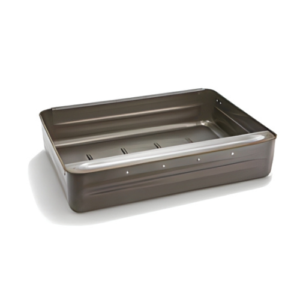Understanding Annealing in Deep Draw Stamping: Key Insights for Engineers
 For engineers working in manufacturing, particularly with deep draw stamping, understanding the nuances of annealing is critical. This heat treatment process is more than just a step in the workflow—it’s a decisive factor in determining the quality, durability, and performance of your metal components. Let’s dive into the specifics of annealing and its role in deep draw stamping from an engineering perspective.
For engineers working in manufacturing, particularly with deep draw stamping, understanding the nuances of annealing is critical. This heat treatment process is more than just a step in the workflow—it’s a decisive factor in determining the quality, durability, and performance of your metal components. Let’s dive into the specifics of annealing and its role in deep draw stamping from an engineering perspective.
What Is Annealing?
Annealing is a controlled heat treatment process designed to alter the microstructure of metals to improve their ductility, reduce hardness, and relieve internal stresses. This process prepares the material for the rigorous demands of deep draw stamping, ensuring it can withstand extensive deformation without failure.
The annealing process involves three key stages:
- Heating: The material is brought to a specified temperature, often tailored to the metal’s composition and desired properties.
- Holding: The material is maintained at this temperature to allow for structural changes at the atomic level.
- Cooling: Controlled cooling solidifies the desired microstructural transformations.
For engineers, precise control over these parameters is essential to achieving consistent and reliable results.
Why Is Annealing Vital in Deep Draw Stamping?
Deep draw stamping subjects metals to significant stresses as they are stretched and shaped into complex geometries. Without proper annealing, the material’s resistance to deformation can lead to:
- Material failure: Cracks, fractures, and splits can occur, especially in high-strength alloys.
- Tool wear: Harder, unannealed materials accelerate die wear, increasing maintenance and downtime.
- Variability in performance: Parts may fail to meet dimensional or mechanical specifications due to inconsistent material properties.
Annealing mitigates these risks by restoring the metal’s ductility and improving its formability, making it a non-negotiable step for high-quality production.
Strategic Use of Annealing in Stamping Processes
In deep draw stamping workflows, annealing can be applied at various stages to optimize material properties:
- Pre-stamping annealing: Conditions the material for the initial forming operations by reducing hardness and internal stresses.
- Intermediate annealing: Used between progressive stamping stages to prevent work hardening and restore ductility.
- Post-stamping annealing: Ensures the final component meets mechanical and structural specifications, particularly in critical applications.
The decision on when and how often to anneal depends on factors such as material type, part complexity, and tolerances required. For instance, stainless steel and titanium often demand multiple annealing cycles due to their higher work-hardening rates.
Engineering Considerations for Effective Annealing
Achieving optimal annealing results requires a deep understanding of material science and process control. Key factors include:
- Temperature control: Overheating can lead to excessive grain growth, reducing material strength. Underheating may leave residual stresses intact.
- Atmosphere management: Using controlled atmospheres, such as inert gases, prevents oxidation and contamination, ensuring surface quality.
- Cooling rates: The cooling phase must be carefully managed to avoid introducing thermal stresses or undesirable microstructures.
Modern advancements, such as precision furnaces with programmable controls, enable engineers to fine-tune these variables for consistent outcomes.
Application-Specific Benefits
Annealing’s benefits extend beyond just manufacturability. In industries like automotive, aerospace, and medical device manufacturing, annealing enhances:
- Fatigue resistance: Parts subjected to cyclic loading benefit from reduced internal stresses.
- Corrosion resistance: Uniform microstructures improve the material’s resistance to environmental degradation.
- Dimensional stability: Parts maintain tighter tolerances, critical for high-performance assemblies.
For engineers, annealing is not just a procedural step but a strategic tool in deep draw stamping. Its ability to optimize material properties and ensure process efficiency makes it indispensable in the production of high-performance metal components. By integrating advanced annealing techniques into your workflows, you can achieve better quality, reduce costs, and meet the exacting demands of modern engineering applications.
Annealing is where material science meets manufacturing excellence—a process that deserves your full attention and expertise. For more information on Deep Drawn Stampings contact Echo at 978-544-7000.

